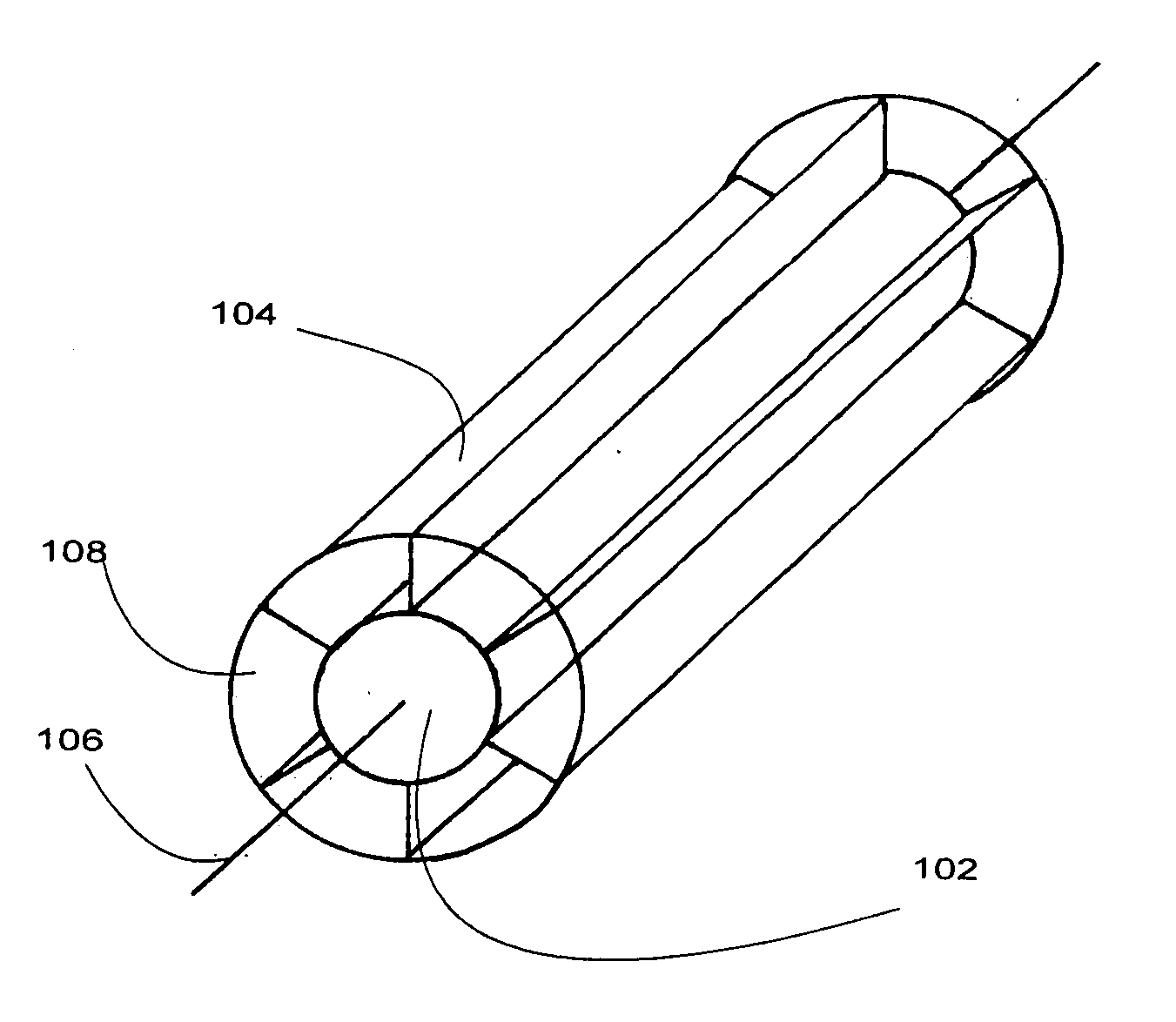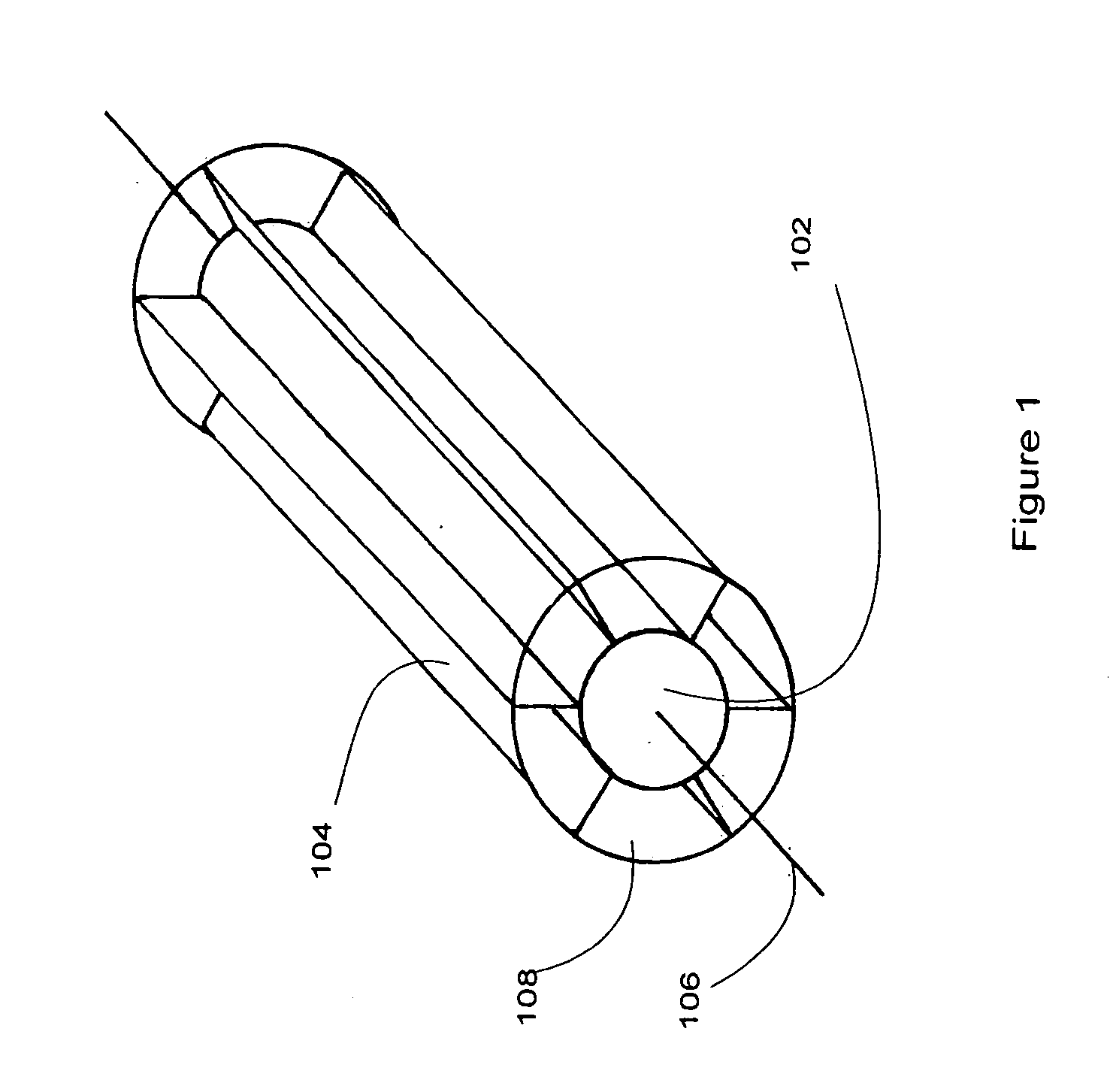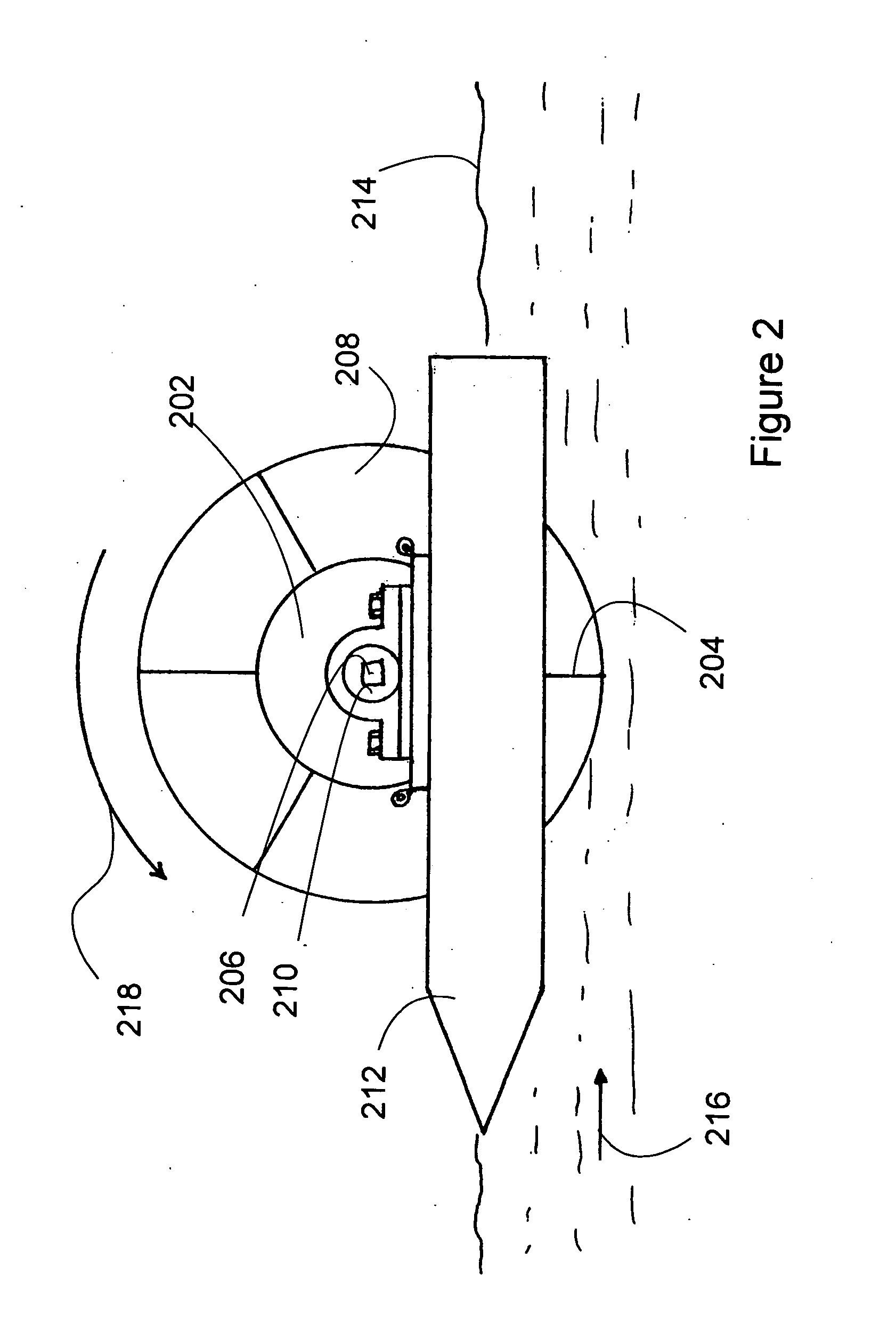Floating electrical generator for aqueducts and slow moving waterways
a technology of floating electrical generators and waterways, applied in the direction of electric generator control, machines/engines, mechanical equipment, etc., can solve the problems of limiting the generation of electricity to the daylight hours, all fundamental limitations of electric energy,
- Summary
- Abstract
- Description
- Claims
- Application Information
AI Technical Summary
Benefits of technology
Problems solved by technology
Method used
Image
Examples
Embodiment Construction
[0086]FIG. 1 is an orthogonal partially transparent view of a paddle wheel of the first embodiment of the invention. A central body may in embodiments be reduced to a central axis of rotation, however, in the presently preferred embodiment and best mode now contemplated, a physical body 102 is generally cylindrical. Other shapes may be used, either regular or irregular. In embodiments, the body may be buoyant and pontoons and other external floats may be eliminated.
[0087]The body may be made of a strong material, one which ages well during repeated cycles of exposure to air and water. Metal, suitable polymers, wood, composites and combinations thereof may be used. As noted, the body may have a central core (depicted as the entire body 102) which provides self flotation. Otherwise, reduced body mass allows less inertia, however, increased body mass may act as a flywheel and help to smooth out momentary irregularities in water flow.
[0088]Body 102 may have a length suitable for use in ...
PUM
 Login to View More
Login to View More Abstract
Description
Claims
Application Information
 Login to View More
Login to View More - R&D
- Intellectual Property
- Life Sciences
- Materials
- Tech Scout
- Unparalleled Data Quality
- Higher Quality Content
- 60% Fewer Hallucinations
Browse by: Latest US Patents, China's latest patents, Technical Efficacy Thesaurus, Application Domain, Technology Topic, Popular Technical Reports.
© 2025 PatSnap. All rights reserved.Legal|Privacy policy|Modern Slavery Act Transparency Statement|Sitemap|About US| Contact US: help@patsnap.com



